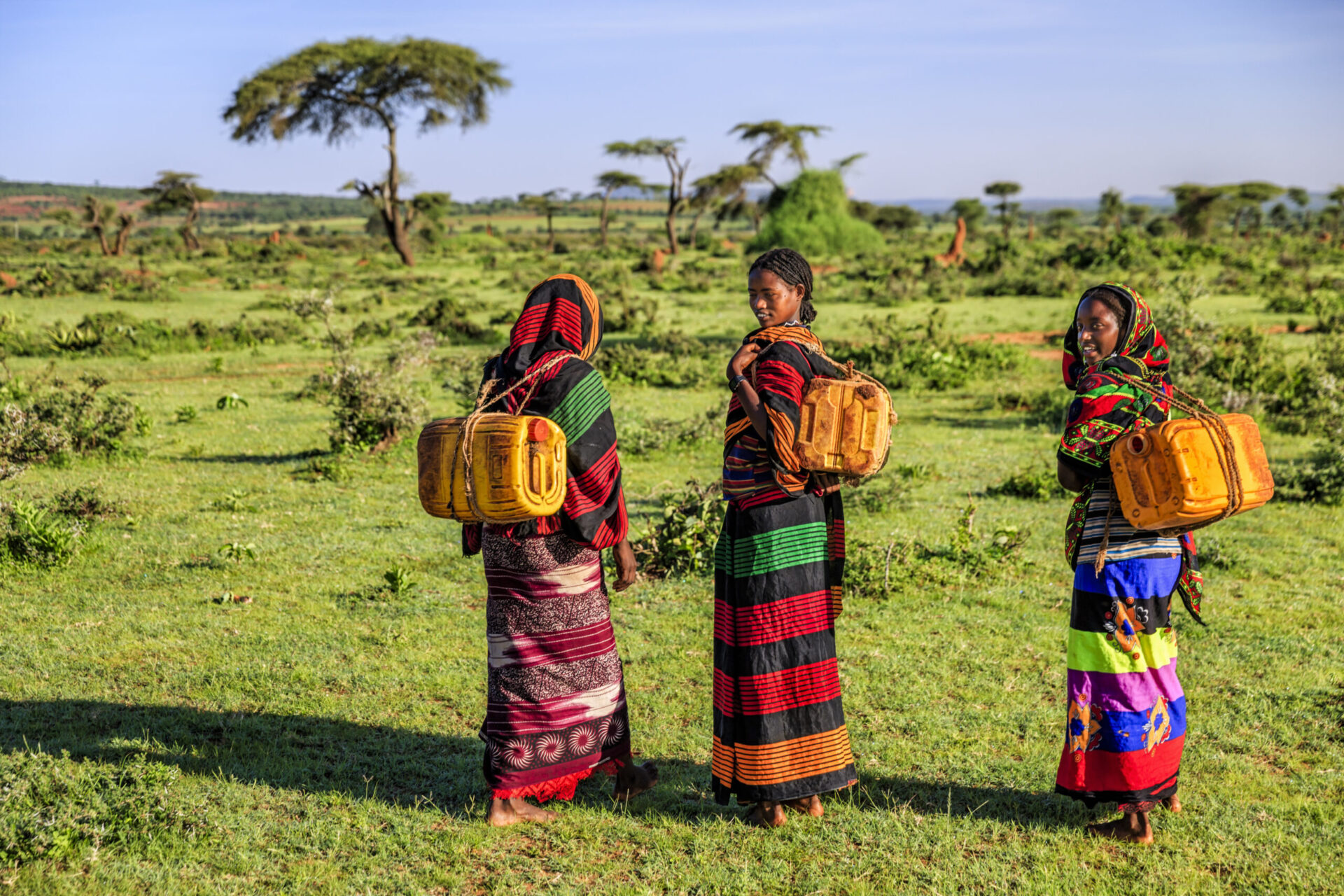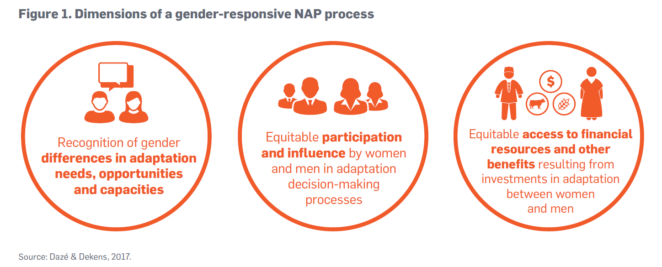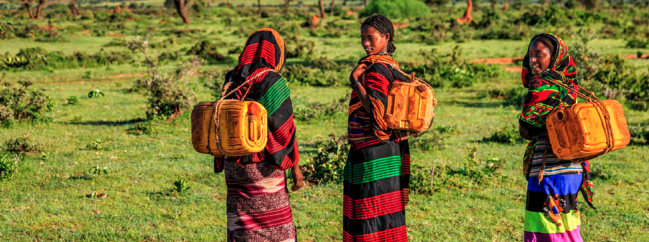Article /
Conducting Gender Analysis to Inform National Adaptation Plan (NAP) Processes: Reflections from six African countries

Introduction
As countries advance their National Adaptation Plan (NAP) processes, they are increasingly focused on issues of effectiveness, aiming to put into practice the principles and approaches that have been highlighted in decisions under the United Nations Framework Convention on Climate Change (UNFCCC). This includes the Paris Agreement, which calls for climate action to be gender-responsive (UNFCCC, 2015), and the Gender Action Plan, which highlights the need to integrate gender considerations in adaptation plans and actions (UNFCCC, 2017). The National Adaptation Plans process, a key mechanism for countries to accelerate climate change adaptation efforts, represents an important opportunity for ensuring that investments in adaptation are effective and sustainable and that they generate equitable benefits for women and men, including the most vulnerable.
Since 2018, the NAP Global Network has been working with six country governments in Africa (Benin, Côte d’Ivoire, Ethiopia, Guinea-Conakry, Madagascar and Togo) to undertake targeted gender analyses to inform their NAP processes. Although the countries are at different stages in the formulation and implementation of their NAPs, each felt that they had reached a strategic moment to conduct these analyses to inform the coming steps in the process.
This briefing note* describes the rationale and approach that NAP Global Network have taken in supporting these NAP-focused gender analyses. It provides insights from the analyses, presenting common themes that are emerging as well as lessons learned from the process. In sharing these reflections, we aim to demonstrate the value of targeted gender analysis in promoting adaptation action that is gender-responsive, while also documenting learning that may be useful for other countries that are working to integrate gender considerations in their NAP processes.
*Download the full briefing note from the right column.
Why Are Targeted Gender Analyses Needed to Inform NAP Processes?
Gender analysis is a key tool used in development policy and practice. It explores differences between and among women, men, girls and boys in terms of their roles, responsibilities, access to and control over resources. Gender analysis also aims to understand gender roles and dynamics, as well as how these influence the respective needs and priorities of women and men. It provides a basis for integrating gender considerations in policies, programs and institutions, in an effort to ensure equitable benefits for women, men, boys and girls (Government of Canada, 2017; Swedish International Development Cooperation Agency, 2015; UN Women Training Centre, 2017). Undertaking gender analysis and applying it in decision making are essential steps in ensuring that NAP processes are gender-responsive.
However, our research has found that, while most countries are making an effort to address gender considerations in their NAP processes, there is limited evidence that context-specific gender analysis has been applied in the processes we analyzed. Further, the focus of gender integration in NAP documents tends to be on women only, versus the differences between women and men in the same context. This can lead to unhelpful generalizations about women’s particular vulnerability, without interrogation of the reasons for this or recognition of the differences among women and the ways in which some men may be vulnerable. Without a more nuanced understanding of gender dynamics and how they influence vulnerability to climate change and capacity to adapt, there is a risk that NAP processes will exacerbate existing inequalities and/or miss opportunities to promote more equitable participation and benefits. This has implications for both the NAP process’s effectiveness and its sustainability. Consequently, we recommend targeted gender analysis to support informed decision making in the NAP process (Dazé & Dekens, 2018).

Lessons Learnt
- The relevance of a NAP-focused gender analysis is strongly dependent on the process used to carry out the analysis. Considering that the linking of climate change to gender equality is new or limited in most countries, NAP-focused gender analyses can be used in a number of ways to inform a country’s NAP process. Specifically, these analyses can help governments to understand how to best frame gender issues in line with the country context; map existing expertise and capacities that can support integration of gender considerations in NAP processes; identify entities and individuals with gender expertise who require capacity building for effective engagement in the NAP process; and propose changes to the membership or procedures of institutional arrangements for the NAP to improve gender integration. Not surprisingly, the involvement of the NAP focal point and other stakeholders involved in the NAP process in the analysis is crucial to ensuring that the recommendations are owned by in-country actors and can be implemented based on available or planned resources. A participatory gender analysis process also serves to raise awareness about the NAP process, gender and the links between the two. It can help to establish, or strengthen, the link between the NAP team and the ministry responsible for gender and/or women’s issues.
- Related to the above, a team of experts rather than an individual is often needed to conduct these analyses. The pool of international and national experts with expertise on climate adaptation (including NAPs) and gender is limited, a problem even more pronounced in francophone countries. Due to a general lack of understanding of the NAP process, there is also a risk that the analysis will focus on gender issues as they relate to climate adaptation in general without making it NAP-specific. In our experience, the analysis is best undertaken by a team comprising experts on gender, adaptation and the NAP process. We found that bringing at least one expert in each country team that had already been involved in a similar analysis in another country is a useful approach to foster learning and capacity building on the methodology. Capacity building on gender and NAPs at the regional level, particularly in francophone Africa, should be a priority for development partners to enhance the availability of expertise to support gender-responsive NAP processes.
- To provide useful recommendations, the NAP-focused gender analysis does not need to be a complicated process. The analysis does not require the development or use of complex tools. A common framework based on guiding questions targeting different aspects of the NAP process was used as a basis for conducting these analyses, building on existing information, capacities and resources. This framework allowed for the flexibility to focus on the most relevant issues based on identified entry points in the NAP process, providing a basis for specific, focused recommendations. On average, and due to the nature of the participatory process, we found that countries need to plan for a four-to-six-month process to conduct the analysis.
- While context-specific information on the differentiated impacts of climate change on men and women is often limited, a basis always exists for conducting gender analysis for the NAP process. Given the frequent lack of available and accessible sex-dissaggregated data and documented information, a useful first step is to review existing information available on gender and women (not necessarily linked to climate change or climate variability). For example, gender analyses conducted in areas such as water, agriculture and health can form a strong basis for consideration of gender issues for adaptation in these sectors. Findings from such analyses can be extrapolated to analyze the implications for climate change adaptation, ensuring that assumptions are interrogated and documented. Further, local actors, if appropriately guided, can start documenting gender-specific climate impacts and capacities for adaptation based on their own experiences and knowledge.
- Countries are pivoting toward dedicated support to their NAP processes via the Green Climate Fund’s (GCF) Readiness Programme, which requires integration of gender considerations.This represents a fundamental shift in terms of supporting the integration of gender considerations in NAP processes. The GCF, established under the UNFCCC, is the largest multilateral climate fund and largest source of multilateral adaptation financing. In 2016, the GCF allocated up to USD 3 million per country for the formulation of NAPs, becoming the most important source of financial support on NAPs for many countries (International Insitute for Sustainable Development & German Corporation for International Cooperation, 2017). All of the countries analyzed are either in the process of developing their NAP readiness proposal or have already submitted their proposals. To date, of the six countries analyzed, only Côte d’Ivoire has received approval. Addressing gender issues is one of the 10 criteria used by the GCF Secretariat for reviewing proposals submitted by countries. For example, the proposal for Côte d’Ivoire states that the project management unit for the implementation of the proposal will include a communication and gender sub-unit to ensure that gender considerations are integrated across all activities.

Suggested Citation
Dazé, A. & Dekens, J. (2019). Conducting Gender Analysis to Inform National Adaptation Plan (NAP) Processes: Reflections from six African countries. NAP Global Network Overview Briefing Note. IISD: Winnipeg, Canada.
References / Further Reading
- Dazé, A. & Dekens, J. (2017, August). A framework for gender-responsive National Adaptation Plan (NAP) processes. NAP Global Network. Retrieved from http://napglobalnetwork.org/wp-content/uploads/2017/10/napgn-en-2017-gender-considerations-adaptation-planning.pdf
- Dazé, A. & Dekens, J. (2018, April). Towards gender-responsive NAP processes: Progress and recommendations for the way forward. NAP Global Network. Retrieved from http://napglobalnetwork.org/resource/towards-gender-responsive-nap-processes-progress-recommendations-way-forward/
- Environment, Forest and Climate Change Commission. Integrating gender considerations in Ethiopia’s National Adaptation Plan (NAP) process: Analysis and recommendations. Environment, Forest and Climate Change Commission of the Federal Democratic Republic of Ethiopia. Retrieved from http://napglobalnetwork.org/resource/integrating-gender-considerations-in-ethiopias-national-adaptation-plan-nap-process/
- Government of Canada. (2017). Gender analysis. Retrieved from http://international.gc.ca/world-monde/funding-financement/gender_analysis-analyse_comparative.aspx?lang=eng
- Ministère de l’Environnement, de l’Ecologie et des Forêts de Madagascar (MEEFM). (2019). Pour un processus de Plan National d’Adaptation (PNA) qui réponde aux questions de genre à Madagascar. MEEFM de Madagascar et Réseau mondial de PNA/ Institut International du Développement Durable (IISD). Retrieved from http://napglobalnetwork.org/resource/pour-un-processus-de-plan-national-dadaptation-pna-qui-reponde-aux-questions-de-genre-a-madagascar/
- Ministère de l’Environnement et du Développement Durable de la République de la Côte d’Ivoire (MINEDD). (2019). Pour un processus de Plan National d’Adaptation (PNA) qui réponde aux questions de genre en Côte d’Ivoire. MINEDD de la République de la Côte d’Ivoire et Réseau mondial de PNA/Institut International du Développement Durable (IISD). Retrieved from http://napglobalnetwork.org/resource/pour-un-processus-de-plan-national-dadaptation-pna-qui-reponde-aux-questions-de-genre-en-cote-divoire/
- UN Women Training Centre. (2017). Gender equality glossary. Retrieved from https://trainingcentre.unwomen.org/mod/glossary/view.php?id=36
Related reading
- Towards Gender-Responsive National Adaptation Plan (NAP) Processes: Progress and Recommendations for the Way Forward
- 10 things to know: Gender equality and achieving climate goals
- Gender dynamics in a changing climate: how gender and adaptive capacity affect resilience
- BRACED report on Gender and Resilience
- Strengthening gender considerations in adaptation planning and implementation in the least developed countries
- Gender Infographics: Showing how gender influences responses to risk
- Understanding social equity and sustainability interactions in the SDGs: Gender differences in food security
- An Online Sourcebook: Integrating Gender in Climate Change Adaptation Proposals
- Gender and adaptation planning in the agricultural sectors: the case of Uganda
